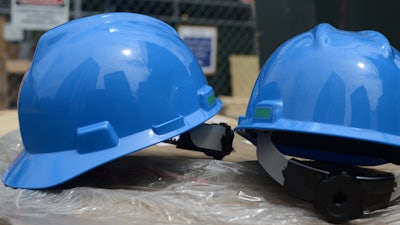
According to the CDC, work-related fatal incidents and injuries began to significantly decrease during the early part of the 20th century. Part of this drop-off can be credited to advances that diminished the risks commonly faced from things like unruly animals, dangerous hand tools, and rickety ladders. Another reason behind the decline was a gradual shift in jobs from the relatively dangerous production of goods to comparatively safer ones, like office work and retail sales, although workplace dangers remain very much with us, as do efforts to reduce them.
For example, mining is still a comparatively risky activity with an annual fatality rate around nine for every hundred thousand miners employed. But in 1900, that same rate was about 300 for every hundred thousand miners. Over the course of a career in mining, that meant one out of every 10 miners would die from a work-related accident.
At the same time, however, accidents back then were comparatively cheap, at least from the employer’s perspective. While an injured worker or their family could sue the employer for damages, winning in court was difficult. Surveys taken around 1900 found that only about half of all workers fatally injured recovered anything at all. And when they did, the average compensation amounted to only six-months pay. That’s changed.
The Cost
According to the National Safety Council, the aggregate cost of work injuries to the U.S. economy in 2019 was $171 billion, including wage and productivity losses, medical expenses, and administrative costs, as well as the value of time lost by workers, the cost to investigate injuries, and damage to property. On an individual basis, the cost per medically involved injury that same year was $42,000, while the cost per death was $1,220,000.
What that sharp upward shift in cost has meant is that enhancing worker safety became a significant economic advantage to the employer – potentially saving them tens of thousands of dollars or more per incident. As a result, investing in safety programs and equipment became industrial priorities, and those priorities have extended to essentially every occupation – including those in higher risk industries such as public safety, construction, logging, mining, fishing, and farming.
One surprising finding was reported in a 2005 study on the effects of OSHA workplace injury inspections in manufacturing. It found that inspections which resulted in a penalty being levied on the employer reduced lost-workday injuries by about 19 percent from 1979 to 1985. However, that reduction fell to 11 percent in 1987–91, and to a statistically insignificant one percent in 1992–98. It was a decline that applied across the board by inspection type, establishment size, and industry. And it’s been hard for experts to explain.
Taking a longer view, there were 19,000 workplace fatalities in 1928. By 2020, there were 4,113, including 340 fatal injuries in U.S. manufacturing plants of all kinds – a nearly five-fold decline in spite of the fact that the nation’s population had more than tripled during that time. One reason for the relative safety of manufacturing is that much of the activity is repetitive. Over the course of developing a systematic body of knowledge about workplace hazards and associated safety products, a series of best practices concerning repetitive operations in potentially hazardous work environments has evolved, and a variety of programs have been created to implement them.
Proactive/Reactive
Many of these programs are reactive – equipment and procedures designed to provide some measure of protection in the event of a bad situation. However, one particularly promising development, is proactive – the pairing of artificial intelligence with continuous monitoring of industrial work activity. The AI component is able to analyze video images captured from cameras throughout the factory floor for possible employee lapses from best practices and proactively alert the worker to the hazard they are facing. Examples include things like not wearing the proper personal protective equipment, dangerous vehicle proximity and fall detection.
If manufacturing companies want to limit the safety hazards on the factory floor, they should look at adopting 24/7 continuous monitoring systems that will be able to detect and alert you of accidents before they happen. The investment in a safety management system can help you save untold dollars while keeping your workers safe.
I am convinced this represents an exciting advance in industrial safety. Coupling smart proactive systems with effective reactive ones will help to extend the long curve of workplace safety we have enjoyed for more than a century, and take it to even higher levels.
Doug Lawson is theCEO of ThinkIQ.





















